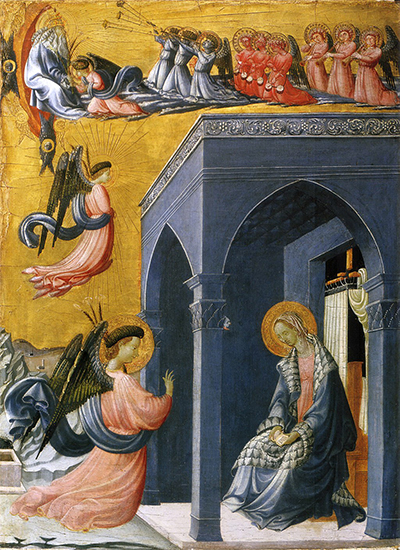Paolo Uccello's Annunciation is an Italian Early Renaissance painting depicting the scene described in Luke's Gospel when the Angel Gabriel is sent by God to announce to the Virgin Mary that she will give birth to the Son of God, Jesus (Luke 1:26-38).
The scene is particularly celebrated in the Catholic tradition to which Uccello belonged. It is believed that Uccello painted Annunciation in the early 1420s, although the exact year is not known. For many years, art historians debated who the painter was, believing for some time that it was the work of Pietro di Giovanni d'Ambrogio.
It took until 1980 for it to be conclusively proved that it belonged to Uccello. Attributes such as his interest in perspective, the figure types, and his decorative treatment of the subject matter, are characteristic of his work, although it was argued by art historian Miklós Boskovits that Annunciation came slightly later in Uccello's career than originally thought - perhaps in the mid-1420s.
The painting is gold and tempera on panel, and is 65cm (25.59") by 48cm (18.9"). The use of ultramarine (a deep blue pigment) in addition to the gold indicate that this painting would have been expensive to produce. Recent studies of the painting have revealed pentimenti (from the Italian pentrisi, 'to repent') meaning that traces of a previous work have been found under the final painting, thereby indicating that the artist changed his mind about the composition of the work during the process of painting. Significantly, the pentimenti reveal that Uccello altered the position of the Holy Spirit during the production of this painting.
Uccello was an apprentice of the famous sculptor Ghiberti, whose style greatly influenced the young Uccello. He also had a lifelong friendship with sculptor Donatello, who facilitated his entry to the painters' guild Compagnia di San Luca, and shortly after, to the Arte dei Medici e degli Speziali. William Thomas Herner Fox-Strangways, a British politician and art collector, donated the piece to the Ashmolean Museum of Art and Architecture, Oxford, in 1850.




